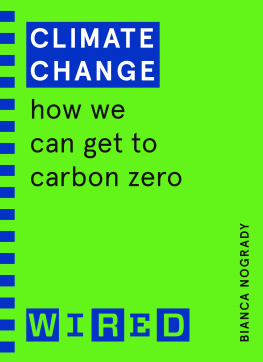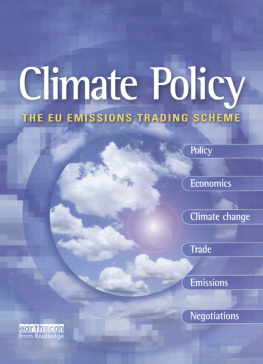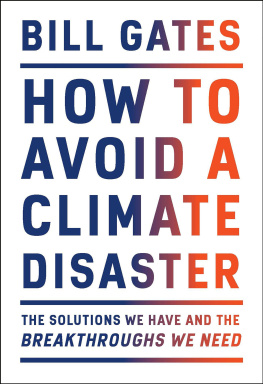First published 2008 by Ashgate Publishing
Published 2016 by Routledge
2 Park Square, Milton Park, Abingdon, Oxon OX14 4RN
711 Third Avenue, New York, NY 10017, USA
Routledge is an imprint of the Taylor & Francis Group, an informa business
Copyright Jon Birger Skjrseth and Jrgen Wettestad 2008
Jon Birger Skjrseth and Jrgen Wettestad have asserted their right under the Copyright, Designs and Patents Act, 1988, to be identified as the authors of this work.
All rights reserved. No part of this book may be reprinted or reproduced or utilised in any form or by any electronic, mechanical, or other means, now known or hereafter invented, including photocopying and recording, or in any information storage or retrieval system, without permission in writing from the publishers.
Notice:
Product or corporate names may be trademarks or registered trademarks, and are used only for identification and explanation without intent to infringe.
British Library Cataloguing in Publication Data
Skjrseth, Jon Birger
EU emissions trading : initiation, decision-making and
implementation
1. Emissions trading - European Union countries
2. Greenhouse gas mitigation - Economic aspects - European
Union countries 3. Greenhouse effect, Atmospheric
Economic aspects - European Union countries
I. Title II. Wettestad, Jrgen, 1955 -
363.7'38746'094
Library of Congress Cataloging-in-Publication Data
Skjrseth, Jon Birger.
EU emissions trading : initiation, decision-making and implementation / by Jon Birger
Skjrseth and Jrgen Wettestad.
p. cm.
Includes bibliographical references and index.
ISBN 978-0-7546-4871-0
1. Emissions trading--European Union countries. 2. Greenhouse gas mitigation-
Economic aspects--European Union countries. 3. Greenhouse effect, Atmospheric-
Economic aspects--European Union countries. 4. Energy policy--Environmental aspects
-European Union countries. I. Wettestad, Jrgen, 1955- II. Title. III. Title: European
Union emissions trading.
HC240.9.P55S45 2007
363.738746094--dc22
2007027846
ISBN: 978-0-754-64871-0 (hbk)
ISBN: 978-1-315-58066-1 (ebk)
Preface
Of the growing body of literature on the EU Emissions Trading Scheme (ETS), some of the most valuable contributions thus far have been written by the European Commission architects themselves (Lefevere 2005; Delbeke ed. 2006). These authors have unmatched knowledge of what happened behind the scenes as well as impressive technical, economic and legal insights. We highly recommend these contributions to anyone wishing a detailed description of the EU ETS.
The contribution of this particular book lies first and foremost in a systematic analysis of why, how and with what consequences the EU Emissions Trading Scheme came into being. Our investigation is undertaken from a political science perspective, making this book a political analysis of an economic policy instrument. As political scientists, we seek to place the initiation, decision-making and implementation of the EU ETS within a broader analytical framework for understanding EU policy-making. To this end we systematically apply social science theory to understand the development of the EU ETS, using the development of the scheme to refine social science theory. A further aim is to apply various explanatory perspectives pointing to different decision-making levels, actors and institutions in answering the research questions. We will view the process from the perspective of the EU member-states, but also from the perspective of EU institutions, of European industry and environmental organizations, and from that of the international climate negotiations and the climate regime, particularly the Kyoto Protocol.
We have tried to restrict technical details to a need to know basis. On the one hand, the EU Emissions Trading Scheme is an intuitively simple policy instrument for distributing or allocating carbon emission allowances or permits (in tons of carbon dioxide, CO) to industry. The main difference from traditional permit systems is that industry can buy or sell these allowances, as deemed necessary. If the system is to make any sense as a climate-policy instrument for reducing emissions, less allowances should be given out than are projected to be needed. On the other hand, the EU ETS is extremely complex: the Monitoring and Reporting guidelines and the Registers Regulation alone fill some 200 pages of legal text. We can comfort any readers struggling to understand the details of the EU Emissions Trading Scheme: they are not alone.
Many scholars have provided us with valuable support and suggestions for improvement. Sebastian Oberthr has gone through the whole manuscript and offered extremely valuable comments, drawing upon his theoretical and empirical expertise. In addition to providing invaluable information in two interviews, Peter Vis commented upon draft versions of . Maryanne Rygg has provided excellent editorial assistance and Susan Hivik has improved the English text considerably.
We are also grateful to Oran R. Young for inviting Jon Birger Skjrseth as a guest researcher to the Bren School of Environmental Science & Management at the University of California, Santa Barbara (UCSB) in 2006/07. This book would not have materialized without the excellent working conditions provided at the UCSB.
Jon Birger Skjrseth | Jrgen Wettestad |
Santa Barbara, California | Lysaker, Norway |














